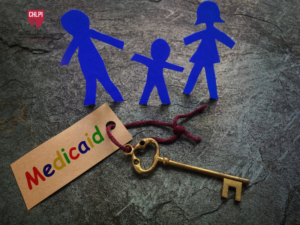Written by Tammuz Huberman, student in the Food Law and Policy Clinic, Fall 2017.
Months after Hurricane Irma, thousands of people are lining up in Miami to sign up for Disaster Supplemental Nutrition Assistance Program benefits, or D-SNAP. More than 30,000 people registered for D-SNAP in Florida after just a few days of program registration opening, making modernization efforts more timely than ever.
D-SNAP provides food assistance to low-income households with food loss or damage caused by natural disasters. The USDA’s Food and Nutrition Service approves D-SNAP benefits for disaster areas that, like SNAP, are administered by states and through Electronic Benefits Transfer (EBT) cards to individuals.
Notably, D-SNAP benefits are available to individuals who were not receiving SNAP benefits prior to a natural disaster. Individuals may qualify for D-SNAP if they are experiencing disaster-related expenses in the immediate aftermath of a disaster such as housing-related expenses such as evacuation or temporary relocation or shelter expenses, personal injuries, or loss of income. Individuals already participating in SNAP are sometimes eligible to receive additional temporary benefits under D-SNAP.
The wave of recent natural disasters—Hurricanes Maria, Irma, and Harvey and the Western wildfires—has prompted a number of D-SNAP or other USDA food-emergency responses:
- Puerto Rico is receiving USDA food packages, though could use more assistance
- Hurricane-affected areas in Texas and Florida have been authorized to operate D-SNAP programs
- Wildfire-affected areas in California and Oregon have been granted more flexible meal access services and other USDA relief.
These temporary benefits are critical to ensuring the food security of disaster-affected individuals and families. However, the recent magnitude of demand for government assistance with respect to food has highlighted some administrative and technological weaknesses of food assistance in the wake of natural disasters.
In Florida, thousands of people are waiting in lines for hours to register for D-SNAP, raising safety concerns, especially with respect to high temperatures and heat exhaustion and accessibility issues for individuals with disabilities. Technological hiccups further exacerbate wait times and D-SNAP administrability.

When demand for emergency food assistance overwhelms agency capabilities, those seeking assistance should not be the ones who suffer. Rather than spending their time on line to secure their family’s next meal, these individuals should be rebuilding their lives. Before the next inevitable natural disaster hits, Congress and USDA should consider a few easy changes to improve program administration.
First, online registration would mitigate crowd control issues (including traffic issues in reaching D-SNAP registration hubs), help anticipate demand (and therefore provide for adequate funding, sufficient number of personnel, etc.) and streamline administrability. Another solution is pre-approving all individuals in disaster-affected zip codes for D-SNAP. After all, natural disasters don’t discriminate based on income, but by geography.
While in-person and individualized registration is touted as an anti-fraud mechanism, other disaster assistance programs such as FEMA primarily rely on online methods that avoid the time-consuming, unsafe and expensive D-SNAP methods. Some states, including Florida, already have pre-registration options for D-SNAP. Taking this one step further and fully migrating to online registration or geographic pre-approval are 21st century solutions to improve upon the necessary and important relief emergency disaster food assistance provides.


